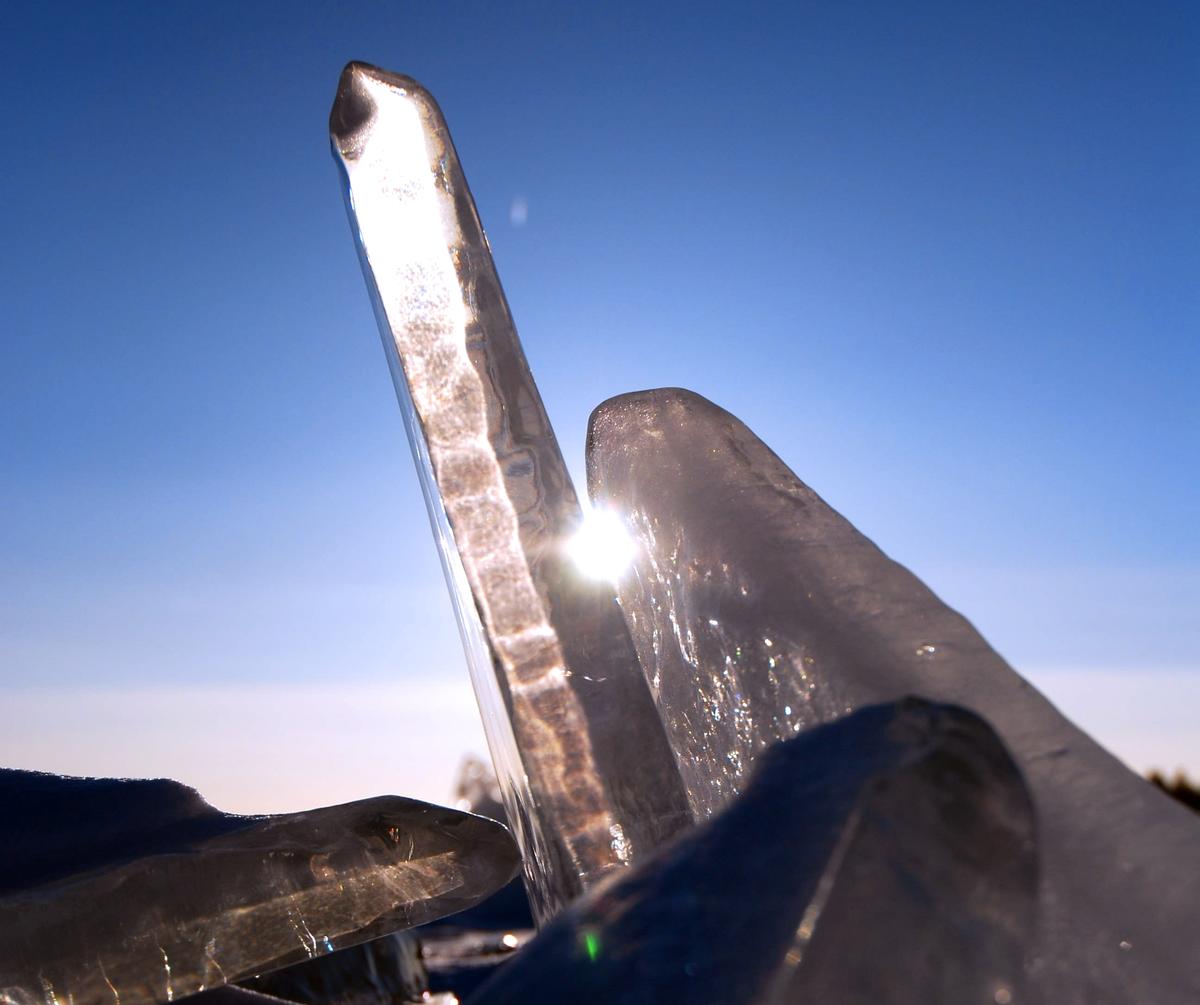Just because we can’t see beneath the ice on lakes, does that mean there’s nothing going on? That it’s not important?
Of course not. Ice fishermen have long been interested in fish activity during winter months. But NRRI Scientist Andy Bramburger is interested in what’s going on with the organisms further down the food chain. And it turns out that ice cover and the snowpack on top of it are both important for a specific species of algae that has found its frozen niche.
“We have several months of the year here when the lakes are covered with ice,” said Bramburger, a limnologist who studies the tiniest of aquatic organisms, “and we really haven’t the foggiest idea of what’s going on down there. This study is about who’s living under there and what are they doing?”
Well, we do know a few things. Along with the fish swimming around, bacteria are decomposing matter and oxygen is being consumed. But as far as Bramburger’s area of study – algae that supplies energy up the food chain – it was assumed that they were mostly dormant until ice-out in the spring. While discussing aspects of winter limnology with Large Lakes Observatory scientist Ted Ozersky, the two decided they’d better do ice research sooner rather than later… “before we don’t have a long enough ice period to study,” Bramburger added. “Climate change is making periods with ice cover shorter and shorter in temperate lakes that experience seasonal changes.”
The scientists cobbled together funding – a bit from Minnesota Sea Grant and some Large Lakes Observatory faculty funds – and paid for a student researcher through the Undergraduate Research Opportunities Program. Then they found an easily accessible body of water where historical algal communities have already been studied: the St. Louis River Estuary.
“We’ll be able to look at the historical records to see if what we see blooming under the ice are well represented in sediments from the past,” said Bramburger. “Have ‘under-ice’ algae species become more or less common through time?”
The ice was finally thick enough in January 2016 to begin collecting water samples. Both clear and dark bottles were used to measure the processes of photosynthesis and cell respiration, in water collected from varying depths. “At each depth there’s an algal community doing its thing and trying to make a living,” Bramburger explained.
The next step sounds worse than it is. The bottles are spiked with trace amounts of radioactive carbon that the algae take in as they photosynthesize making the process measurable. If the scientists know how much photosynthesis is taking place, they know how active and productive the algae are under the ice.
This small scale study – just three months of sampling, once a week – will hopefully lead to more in-depth research. But they found that the first meaningful burst of photosynthesis does happen under the ice, but not until most of the snow has melted and sunlight can get though.
With ice still about eight inches thick last spring, they found high numbers of an algae species called Aulacoseira islandica. This species frequently attaches itself to the bottom of the ice, accessing the limited light resources very early in the season, in advance of other algae species.
Algal productivity is important because they are the food source for microscopic zooplankton, which are the food source for bigger things, like the fish we eat.
“As we lose ice cover, we’re in danger of never having understood how much algal production is happening under the ice and its importance to the overall lake food web,” said Bramburger. “That’s why we needed to do this study, and I hope it leads to more research.”
